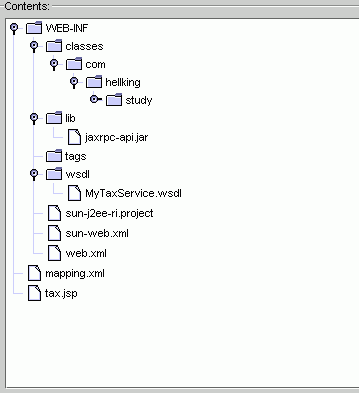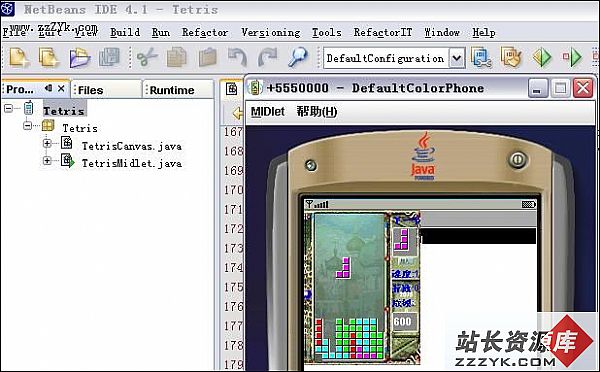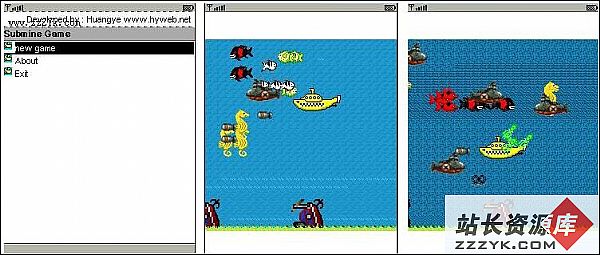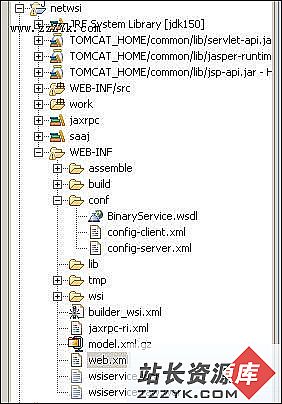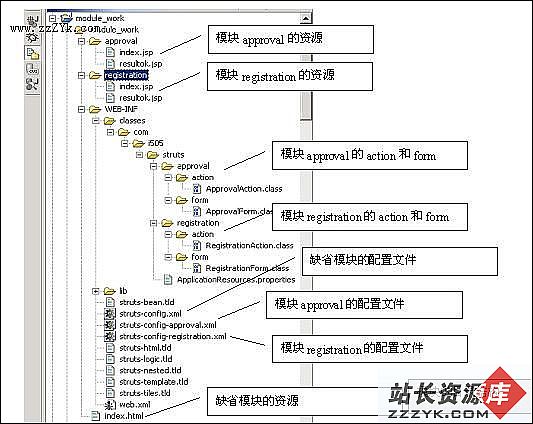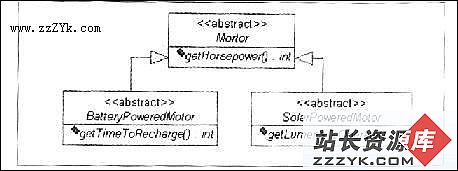java文件操作函数与类
一.获得控制台用户输入的信息
| 代码如下 | 复制代码 |
|
/**获得控制台用户输入的信息 * @return * @throws IOException */ public String getInputMessage() throws IOException{ System.out.println("请输入您的命令∶"); byte buffer[]=new byte[1024]; int count=System.in.read(buffer); char[] ch=new char[count-2];//最后两位为结束符,删去不要 for(int i=0;i<count-2;i++) ch[i]=(char)buffer[i]; String str=new String(ch); return str; }/** */...
|
|
可以返回用户输入的信息,不足之处在于不支持中文输入,有待进一步改进。
二.复制文件
1.以文件流的方式复制文件
| 代码如下 | 复制代码 |
|
/**以文件流的方式复制文件 * @param src 文件源目录 * @param dest 文件目的目录 * @throws IOException */ public void copyFile(String src,String dest) throws IOException{ FileInputStream in=new FileInputStream(src); File file=new File(dest); if(!file.exists()) file.createNewFile(); FileOutputStream out=new FileOutputStream(file); int c; byte buffer[]=new byte[1024]; while((c=in.read(buffer))!=-1)...{ for(int i=0;i<c;i++) out.write(buffer[i]);
} in.close(); out.close(); }/** */...
|
|
该方法经过测试,支持中文处理,并且可以复制多种类型,比如txt,xml,jpg,doc等多种格式
三.写文件
1.利用PrintStream写文件
| 代码如下 | 复制代码 |
|
/** * 文件输出示例 */ public void PrintStreamDemo(){ try ...{ FileOutputStream out=new FileOutputStream("D:/test.txt"); PrintStream p=new PrintStream(out); for(int i=0;i<10;i++) p.println("This is "+i+" line"); } catch (FileNotFoundException e) ...{ e.printStackTrace(); } }/** */...
|
|
2.利用StringBuffer写文件
| 代码如下 | 复制代码 |
|
public void StringBufferDemo() throws IOException...{ File file=new File("/root/sms.log"); if(!file.exists()) file.createNewFile(); FileOutputStream out=new FileOutputStream(file,true); for(int i=0;i<10000;i++)......{ StringBuffer sb=new StringBuffer(); sb.append("这是第"+i+"行:前面介绍的各种方法都不关用,为什么总是奇怪的问题 "); out.write(sb.toString().getBytes("utf-8")); } out.close(); }...
|
|
该方法可以设定使用何种编码,有效解决中文问题。
四.文件重命名
| 代码如下 | 复制代码 |
|
/**文件重命名 * @param path 文件目录 * @param oldname 原来的文件名 * @param newname 新文件名 */ public void renameFile(String path,String oldname,String newname){ if(!oldname.equals(newname))...{//新的文件名和以前文件名不同时,才有必要进行重命名 File oldfile=new File(path+"/"+oldname); File newfile=new File(path+"/"+newname); if(newfile.exists())//若在该目录下已经有一个文件和新文件名相同,则不允许重命名 System.out.println(newname+"已经存在!"); else...{ oldfile.renameTo(newfile); } } }/** */... |
|
五.转移文件目录
| 代码如下 | 复制代码 |
|
转移文件目录不等同于复制文件,复制文件是复制后两个目录都存在该文件,而转移文件目录则是转移后,只有新目录中存在该文件。 /**转移文件目录 * @param filename 文件名 * @param oldpath 旧目录 * @param newpath 新目录 * @param cover 若新目录下存在和转移文件具有相同文件名的文件时,是否覆盖新目录下文件,cover=true将会覆盖原文件,否则不操作 */ public void changeDirectory(String filename,String oldpath,String newpath,boolean cover){ if(!oldpath.equals(newpath))...{ File oldfile=new File(oldpath+"/"+filename); File newfile=new File(newpath+"/"+filename); if(newfile.exists())...{//若在待转移目录下,已经存在待转移文件 if(cover)//覆盖 oldfile.renameTo(newfile); else System.out.println("在新目录下已经存在:"+filename); } else...{ oldfile.renameTo(newfile); } } }/** */...
|
|
六.读文件
1.利用FileInputStream读取文件
| 代码如下 | 复制代码 |
|
/**读文件 * @param path * @return * @throws IOException */ public String FileInputStreamDemo(String path) throws IOException{ File file=new File(path); if(!file.exists()||file.isDirectory()) throw new FileNotFoundException(); FileInputStream fis=new FileInputStream(file); byte[] buf = new byte[1024]; StringBuffer sb=new StringBuffer(); while((fis.read(buf))!=-1)...{ sb.append(new String(buf)); buf=new byte[1024];//重新生成,避免和上次读取的数据重复 } return sb.toString(); }/** */...
|
|
2.利用BufferedReader读取
在IO操作,利用BufferedReader和BufferedWriter效率会更高一点
| 代码如下 | 复制代码 |
|
/**读文件 * @param path * @return * @throws IOException */ public String BufferedReaderDemo(String path) throws IOException{ File file=new File(path); if(!file.exists()||file.isDirectory()) throw new FileNotFoundException(); BufferedReader br=new BufferedReader(new FileReader(file)); String temp=null; StringBuffer sb=new StringBuffer(); temp=br.readLine(); while(temp!=null)...{ sb.append(temp+" "); temp=br.readLine(); } return sb.toString(); }/** */...
|
|
3.利用dom4j读取xml文件
| 代码如下 | 复制代码 |
|
/**从目录中读取xml文件 * @param path 文件目录 * @return * @throws DocumentException * @throws IOException */ public Document readXml(String path) throws DocumentException, IOException{ File file=new File(path); BufferedReader bufferedreader = new BufferedReader(new FileReader(file)); SAXReader saxreader = new SAXReader(); Document document = (Document)saxreader.read(bufferedreader); bufferedreader.close(); return document; }/** */...
|
|
七.创建文件(文件夹)
1.创建文件夹
| 代码如下 | 复制代码 |
|
/**创建文件夹 * @param path 目录 */ public void createDir(String path){ File dir=new File(path); if(!dir.exists()) dir.mkdir(); }/** */... |
|
2.创建新文件
| 代码如下 | 复制代码 |
|
/**创建新文件 * @param path 目录 * @param filename 文件名 * @throws IOException */ public void createFile(String path,String filename) throws IOException{ File file=new File(path+"/"+filename); if(!file.exists()) file.createNewFile(); }/** */... |
|
八.删除文件(目录) 1.删除文件
| 代码如下 | 复制代码 |
|
/**删除文件 * @param path 目录 * @param filename 文件名 */ public void delFile(String path,String filename){ File file=new File(path+"/"+filename); if(file.exists()&&file.isFile()) file.delete(); }/** */... |
|
2.删除目录 要利用File类的delete()方法删除目录时,必须保证该目录下没有文件或者子目录,否则删除失败,因此在实际应用中,我们要删除目录,必须利用递归删除该目录下的所有子目录和文件,然后再删除该目录。
/**递归删除文件夹
* @param path
| 代码如下 | 复制代码 |
| package com.b510; import java.io.File; import java.io.FileInputStream; import java.io.FileOutputStream; import java.io.FileWriter; import java.io.InputStream; import java.io.PrintWriter; /** * * @author Hongten</br> * * 文件的操作 * * * */ public class OperateFiles { /** * @param args */ public static void main(String[] args) { OperateFiles operateFiles = new OperateFiles(); //新建一个文件夹 operateFiles.newFolder("c:/hongten"); //新建一个文件,同时向里面写入内容 operateFiles.newFile("c:/hongten/Hello.txt", "hello,i'm Hongten.你好"); //删除一个文件 operateFiles.deleteFile("c:/hongten/Hello.txt"); //删除一个文件夹 operateFiles.deleteFolder("c:/hongten"); //复制文件夹 operateFiles.copyFolder("c:/hongten", "e:/hongten"); //提取文件的扩展名 String expandedName=operateFiles.getExpandedName("c:/hongten/Hello.txt"); System.out.println(expandedName); //提取文件的路径 System.out.println(operateFiles.getFilePath("c:/hongten/Hello.txt")); } /** * 获得文件的扩展名 * @param filePath 文件的路径 如:c:/hongten/Hello.txt * @return 文件的扩展名 如:txt */ public String getExpandedName(String filePath){ return filePath.substring(filePath.lastIndexOf(".")+1); } /** * 获得文件的路径 * @param file 文件的路径 * @return 文件的路径 */ public String getFilePath(String file){ return file.substring(0,file.lastIndexOf("/")); } /** * 新建一个目录 * * @param folderPath * 新建目录的路径 如:c:\newFolder */ public void newFolder(String folderPath) { try { File myFolderPath = new File(folderPath.toString()); if (!myFolderPath.exists()) { myFolderPath.mkdir(); } } catch (Exception e) { System.out.println("新建目录操作出错"); e.printStackTrace(); } } /** * 新建一个文件 * * @param filePath * 新建文件的目录 如:c:\hongten.java */ public void newFile(String filePath) { try { File myFilePathFile = new File(filePath.toString()); if (!myFilePathFile.exists()) { myFilePathFile.createNewFile(); } } catch (Exception e) { System.out.println("新文件创建失败"); e.printStackTrace(); } } /** * 新建一个文件,同时向文件中写入内容 * * @param filePath * 新建文件的目录 如:c:\hongten.java * @param fileContent * 向文件中写入的内容 */ public void newFile(String filePath, String fileContent) { try { newFile(filePath); FileWriter resultFile = new FileWriter(filePath); PrintWriter myFile = new PrintWriter(resultFile); myFile.println(fileContent); resultFile.close(); } catch (Exception e) { System.out.println("新建文件操作出错"); e.printStackTrace(); } } /** * 删除一个文件 * * @param filePath * 要删除文件的绝对路径 如:c:\hongten\Hello.txt */ public void deleteFile(String filePath) { try { File preDelFile = new File(filePath); if (preDelFile.exists()) { preDelFile.delete(); } else { System.out.println(filePath + "不存在!"); } } catch (Exception e) { System.out.println("删除文件操作出错"); e.printStackTrace(); } } /** * 删除一个文件夹 * * @param folderPath * 要删除的文件夹的绝对路径 如:c:\hongten */ public void deleteFolder(String folderPath) { try { delAllFiles(folderPath); File preDelFoder = new File(folderPath); if (preDelFoder.exists()) { preDelFoder.delete(); } else { System.out.println(folderPath + "不存在!"); } } catch (Exception e) { System.out.println("删除文件操作出错"); e.printStackTrace(); } } /** * 删除一个文件夹下的所有文件 * * @param folderPath * 要删除的文件夹的绝对路径 如:c:\hongten */ public void delAllFiles(String folderPath) { File file = new File(folderPath); if (!file.exists()) { return; } if (!file.isDirectory()) { return; } String[] tempList = file.list(); File temp = null; for (int i = 0; i < tempList.length; i++) { if (folderPath.endsWith(File.separator)) { temp = new File(folderPath + tempList[i]); } else { temp = new File(folderPath + File.separator + tempList[i]); } if (temp.isFile()) { temp.delete(); } if (temp.isDirectory()) { delAllFiles(folderPath + "/" + tempList[i]);// 先删除文件夹里面的文件 deleteFolder(folderPath + "/" + tempList[i]);// 再删除空文件夹 } } } /** * 单个文件的复制 * * @param oldPath * 原路径 如:c:\Hello.java * @param newPath * 新路径 如:f:\Hello.java */ public void copyFile(String oldPath, String newPath) { try { int bytesum = 0; int byteread = 0; File oldfile = new File(oldPath); if (oldfile.exists()) { // 文件存在时 InputStream inStream = new FileInputStream(oldPath); // 读入原文件 FileOutputStream fs = new FileOutputStream(newPath); byte[] buffer = new byte[1444]; // int length = 0; while ((byteread = inStream.read(buffer)) != -1) { bytesum += byteread; // 字节数 文件大小 fs.write(buffer, 0, byteread); } inStream.close(); } } catch (Exception e) { System.out.println("复制单个文件操作出错"); e.printStackTrace(); } } /** * 文件夹的复制 * * @param oldPath * 原文件夹路径 如: c:\hello * @param newPath * 新文件夹路径 如: e:\hello */ public void copyFolder(String oldPath, String newPath) { try { (new File(newPath)).mkdirs(); // 如果文件夹不存在 则建立新文件夹 File a = new File(oldPath); String[] file = a.list(); File temp = null; for (int i = 0; i < file.length; i++) { if (oldPath.endsWith(File.separator)) { temp = new File(oldPath + file[i]); } else { temp = new File(oldPath + File.separator + file[i]); } if (temp.isFile()) { FileInputStream input = new FileInputStream(temp); FileOutputStream output = new FileOutputStream(newPath + "/" + (temp.getName()).toString()); byte[] b = new byte[1024 * 5]; int len; while ((len = input.read(b)) != -1) { output.write(b, 0, len); } output.flush(); output.close(); input.close(); } if (temp.isDirectory()) {// 如果是子文件夹 copyFolder(oldPath + "/" + file[i], newPath + "/" + file[i]); } } } catch (Exception e) { System.out.println("复制整个文件夹内容操作出错"); e.printStackTrace(); } } /** * 移动单个文件 * * @param oldPath * 源文件路径 如:c:\hello.java * @param newPath * 新文件路径 如:e:\hello.java */ public void moveFile(String oldPath, String newPath) { copyFile(oldPath, newPath); deleteFile(oldPath); } /** * 移动文件夹 * * @param oldPath * 原文件夹路径 如:c:\hongten * @param newPath * 新文件夹路径 如:e:\hongten */ public void moveFolder(String oldPath, String newPath) { copyFolder(oldPath, newPath); deleteFolder(oldPath); } /** * 获得系统根目录绝对路径 * * @return */ public String getPath() { String sysPath = this.getClass().getResource("/").getPath(); // 对路径进行修改 sysPath = sysPath.substring(1, sysPath.length() - 16); return sysPath; } } |
|
InputStream类和OutputStream类
InputStream类是所有输入数据流的父类,它是一个抽象类,定义了所有输入数据流都具有的共通特性。
java.io.InputStream的方法如下:
public abstract read()throws IOException
读取一个字节并返回该字节,如果到输入源的末则返回-1。一个具体的输入流类需要重载此方法,以提供 有用的功能。例如:在FileInputStream类中,该方法从一个文件读取一个字节。
public int read(byte[] b)throws IOException
把数据读入到一个字节数据中,并返回实际读取的字节数目。如果遇到流末 则返回-1,该方法最多读取b.length个字节。
public abstract int read(byte[] b,int off,int len)throws IOException
把数据读入到一个字节数组中并返回实际读取的字节数目。如果遇到流的末尾则的返回-1。 其中参数off表示第一个字节在b中的位置,len表示读取的最大字节数。
public long skip(long n)throws IOException
略过N个字节不读取,会返回实际略过的字节数目。因为数据流中剩下的数据可能不到N 个字节那么多,所以此时返回值会小于N。
public int available()throws IOException
read方法(包括后面要讲的OutputStream类的Write方法)都能够阴塞一个线程,直到字节被 实际读取或写入。这意味着如果一个流不能立即被读或被写
补充:Jsp教程,Java技巧及代码